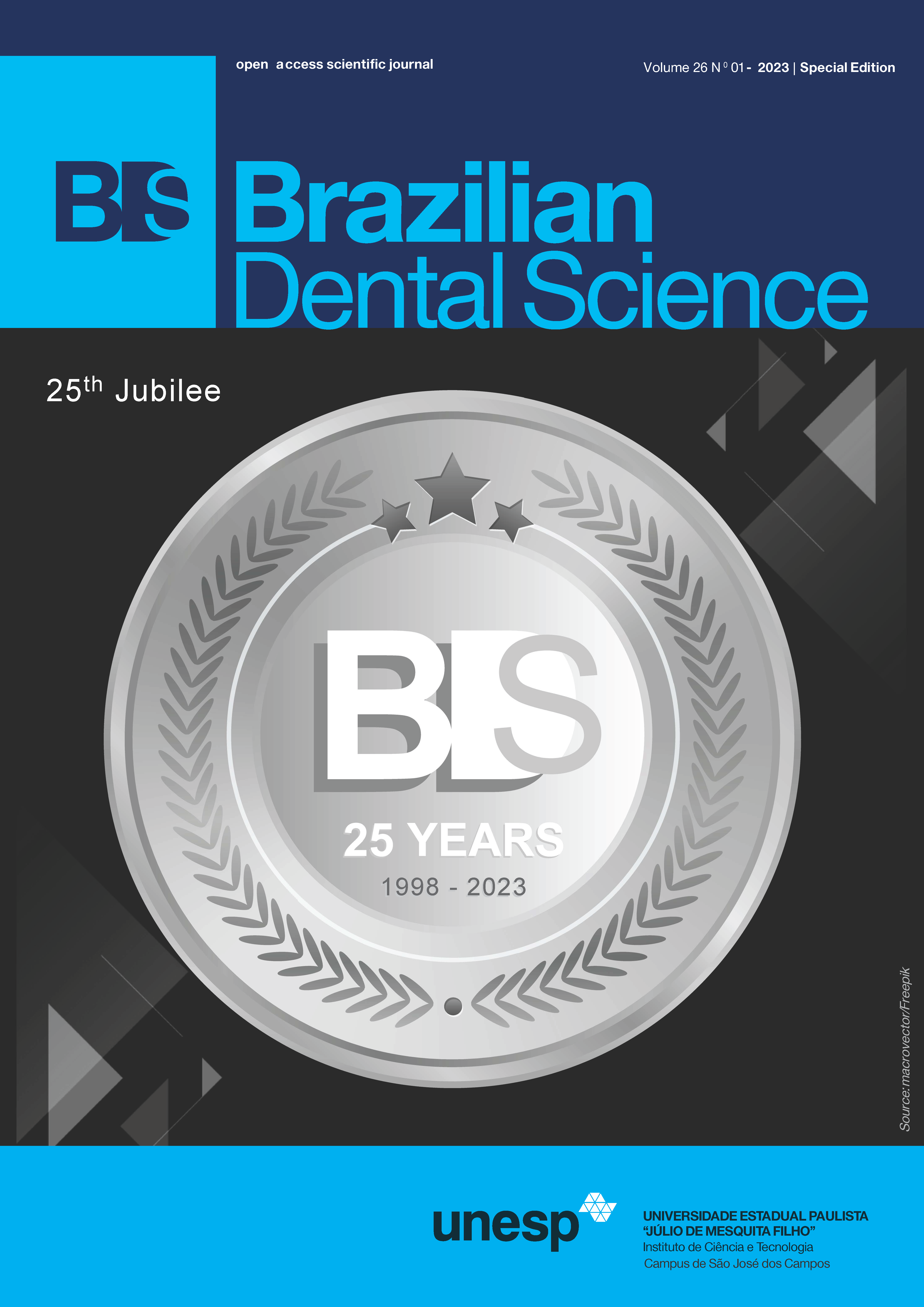Quality of life assessment in patients with temporomandibular disorder with stabilization splints and home therapeutic exercises: a randomized clinical trial
Quality of Life Assessment in Temporomandibular Disorder
DOI:
https://doi.org/10.4322/bds.2023.e3669Abstract
Objective: The present study aimed to evaluate the quality of life in TMD patients with the use of Stabilization Splints (SSs) and Home Therapeutic Exercises (HTEs) guidance. Material and Methods: The study was a clinical, randomized, controlled, prospective, and interventional trial. The screening included dentate patients of both genders, diagnosed with TMD through the RDC/TMD questionnaire with no TMJ osteoarthritis and/or osteoarthrosis. To assess the quality of life, the Short-Form Health Survey (SF-36) questionnaire was applied to all patients (n=70), randomized into a test group with SS and a control group with HTE. The evaluations of both questionnaires were performed before and after the intervention of 12 weeks. Results: The comparisons between pre- and post-intervention intragroups were performed by the non-parametric Wilcoxon test with a 5% significance level. There was a frequency distribution of the responses to the 36 items of the SF-36 questionnaire and comparisons between times. In the test group, 49 patients received a SS and did HTEs. In the control group, 21 patients performed HTEs. In the statistical analysis, among the eight domains, three were identified with significant scores: pain, mental health, and vitality. Conclusion: It was found that there was an improvement in pain and quality of life after the treatment of TMD with a SS and HTE.
KEYWORDS
Clinical trial; Quality of life; Stabilization splint; Temporomandibular disorder; Therapeutic exercises.
Downloads
Published
How to Cite
Issue
Section
License
Brazilian Dental Science uses the Creative Commons (CC-BY 4.0) license, thus preserving the integrity of articles in an open access environment. The journal allows the author to retain publishing rights without restrictions.
=================





























